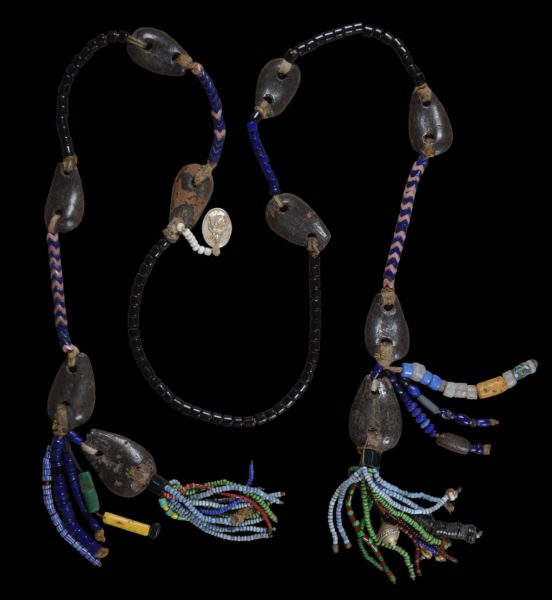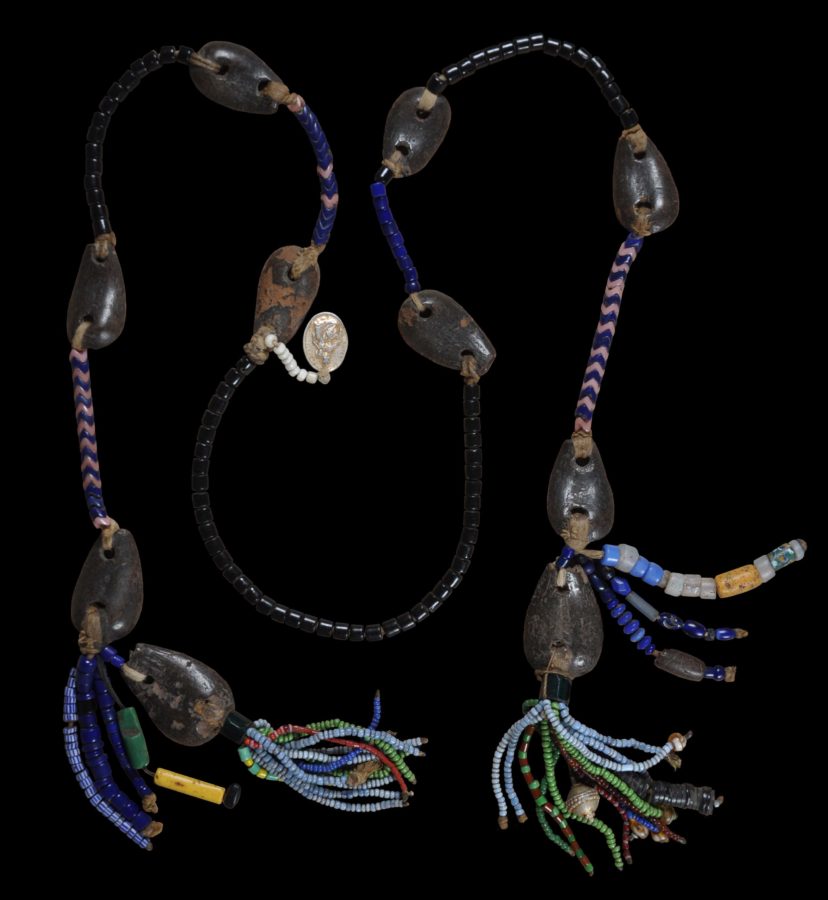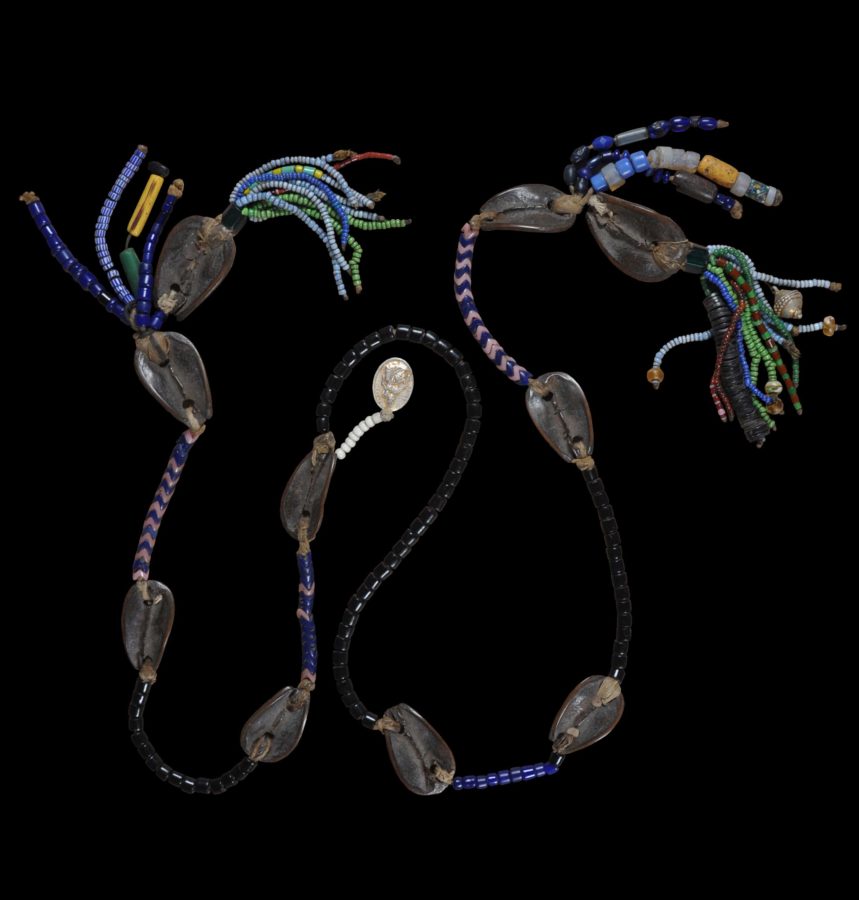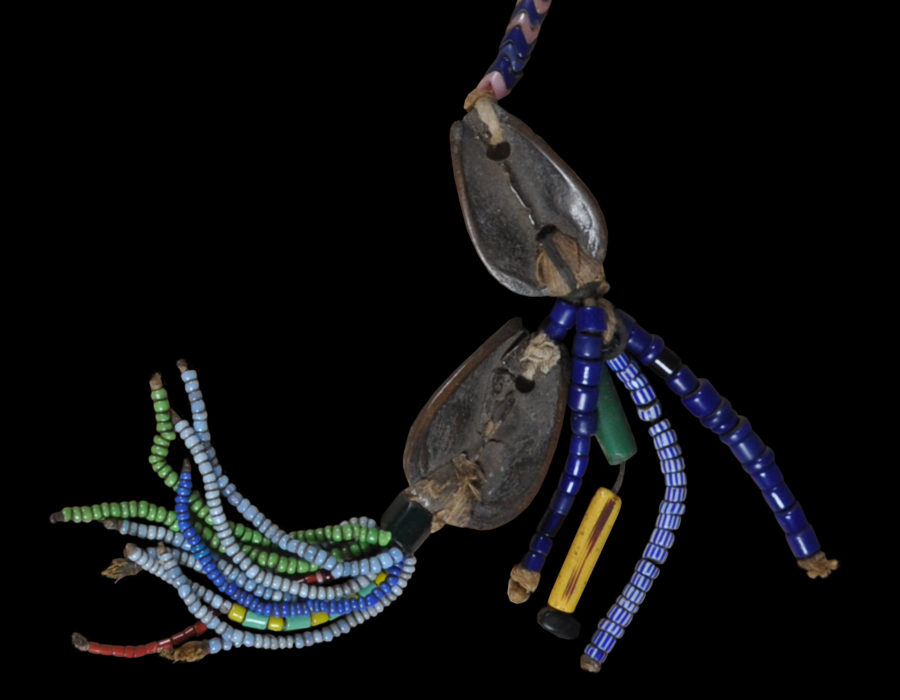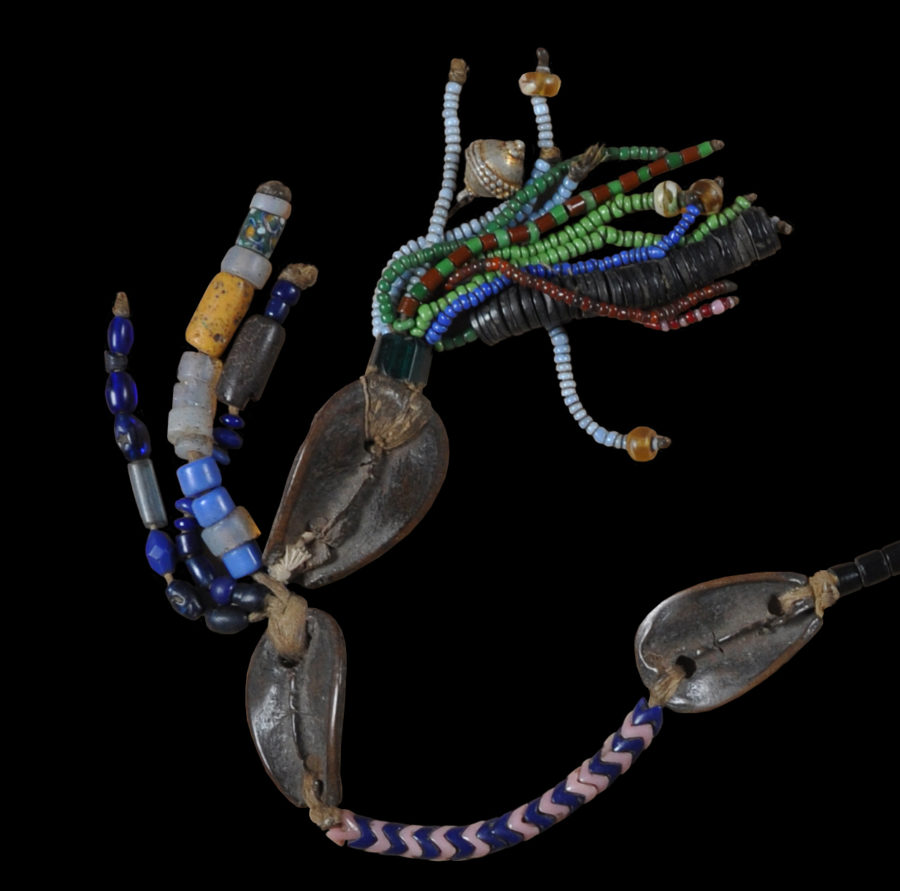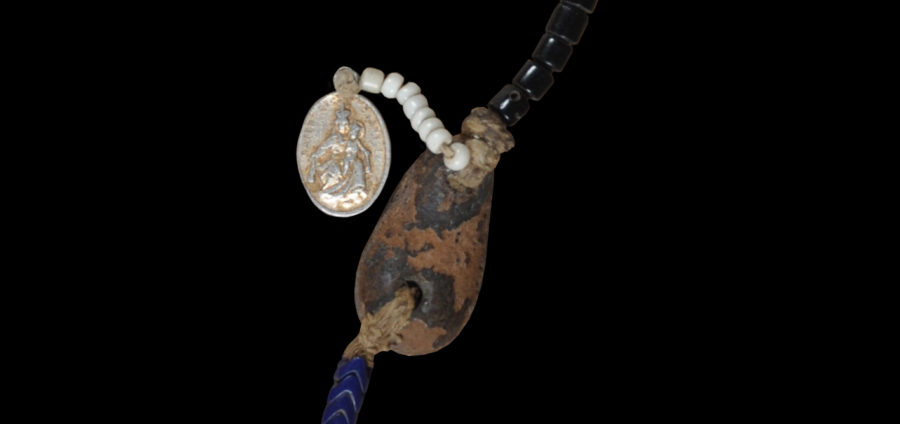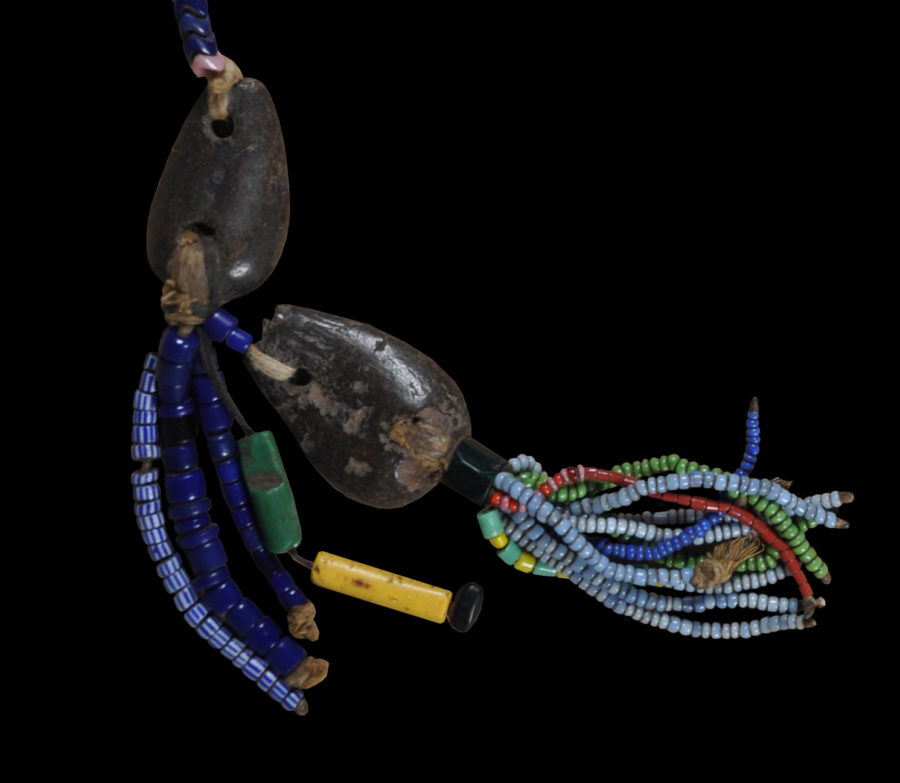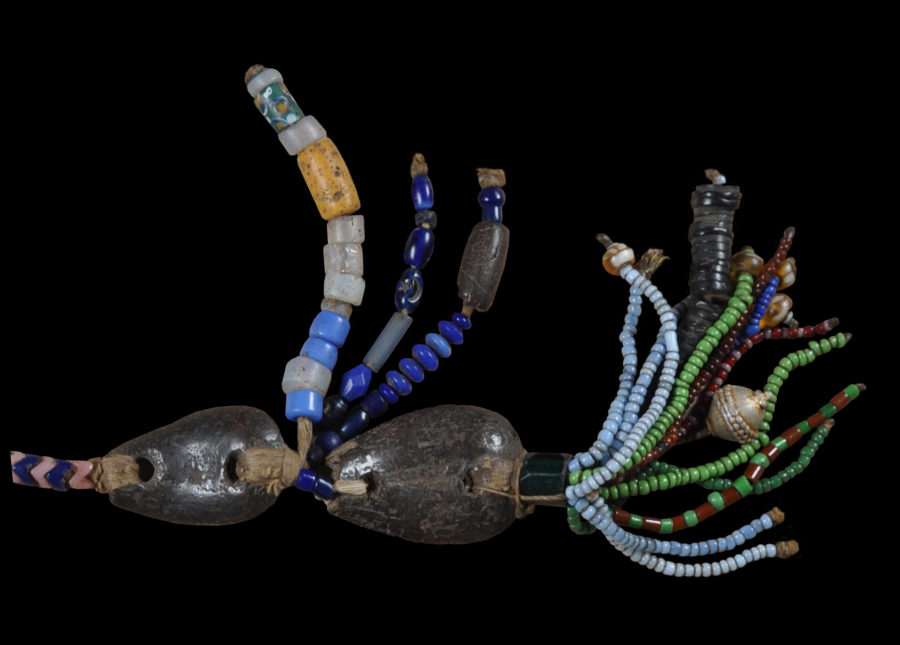This rare, Yoruba opele oracle chain consists of ten halved opele nuts and colourful glass beads threaded on native cord. Beaded tassels are attached to the ends of the chain. One end is further decorated with a string of black thin coconut shell disks and a small silver ornament. The glass beads mostly are trade beads from Europe, including pink and blue ‘snake vertebrae’ glass beads from Bohemia/Czechoslovakia.
Traditionally, palm nuts were reserved for more important divination rituals (Grootaers, 2002). An opele oracle chain such as this would be used for less complicated divinations. Such chains could be used for more important divinations but the results were regarded as potentially less accurate.
Opele nuts are the bisected fruit capsules from the opele tree (schrebera golungensis). The bisected nuts have a central ridge on the concave interior. Out of the ten halved opele nuts, according to traditional practice, only eight are meaningful for interpreting the results of the divination. The extra two probably are merely decorative, with one attached to each end of the chain, forming part of the tassels.
During the divination ritual, the diviner would grip the chain in the middle and strike it on a divination board such that the chain’s two halves fell into approximate parallel lines. The diviner then proceeded to examine the halved opele nuts. If the central ridge of the halved nut was visible, the diviner drew a double line on the board. If the central ridge is concealed because the nut faces down, a single line was drawn on the board. This would tend to be repeated until one of the 256 recognised odus is created. (An odus is a set of accepted traditional binary patterns or codes that evolved over hundreds of years of observation and prediction.) Divining with an opele chain was faster than using palm nuts to seek guidance from the spirits – one strike of the chain equalled eight throws of the palm nuts!
The chain here – its glass beads and nuts – have patinas and wear consistent with age and use, and yet is in fine condition.
We are aware of only one published example of an opele chain – Grootaers, (2002, p. 76). The example is of approximately the same length as ours, but the halved opele nuts are represented by small copper-alloy masks instead.
References
Grootaers, J. L. & I. Eisenburger, Forms of Wonderment: The History and Collections of the Afrika Museum, Berg en Dal, 2002.


